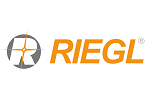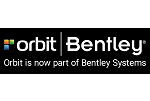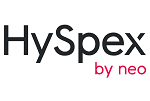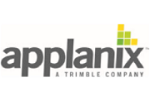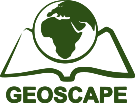GIS Ostrava 2022
Earth Observation for Smart City and Smart Region
16th - 18th
March 2022 
Workshops
Citizen Science and Smart Communities (prof. Maria Brovelli, Politecnico di Milano, Italy)
While public participation in scientific achievements has a long history, the last decades have seen more attention and an impressive increase in the number of involved people. Citizen science, the term used for denoting such an attitude, is a very diverse practice, encompassing various forms, depths, and aims of collaboration between scientists and citizen researchers and a broad range of scientific disciplines. This renovated discipline has the potential to lead us towards a democratization and greater penetration of science and elicit the birth of smart communities.
Many software tools have been developed in order to simplify the insertion of data into structured forms and the aggregation and analysis of the obtained data. In recent years, the growing availability of feature-rich and low-cost smartphones have boosted the development of innovative solutions for data collection using portable devices.
In the geospatial field, one of the most significant experiences is that of OpenStreetMap (www.openstreetmap.org), the ecosystem (database/platforms/communities) aiming at building the free map of the world.
The proposed workshop will consist of a theoretical session and a practical session, where the following topics will be addressed:
- Citizen science and Volunteer Geographic Information: definitions, examples, open questions, principles.
- OpenStreetMap: how to contribute? Editors and mapping tools. Organizing mapping parties and mapathons (map marathons)
- OpenStreetMap: how to download and use the data in our GIS projects.
In the practical part we will learn how to map simple features with the basic id Editor and how to input data in the open-source GIS QGIS. It is suggested to create in advance the OpenStreetMap account (https://www.openstreetmap.org/user/new), to install the Long Term Release (LTR) of QGIS (https://www.qgis.org/en/site/forusers/download.html) and to have a mouse for easier digitizing the features.
Introduction into the ARTMO toolbox for converting optical remote sensing data into biophysical variables (Dr. Jochem Verrelst, University of Valencia, Spain)
Workshop will focus on the use of ARTMO’s (Automated Radiative Transfer Models Operator), retrieval toolboxes and post-processing tools (https://artmotoolbox.com/ ) for the generation and interpretation of optical remote sensing data. ARTMO brings together a diverse collection of leaf, canopy and atmosphere radiative transfer models (RTMs) into a synchronized user-friendly GUI environment. Essential tools are provided to create all kinds of look-up tables (LUT). These LUTs can then subsequently be used for mapping applications from optical images. A LUT, or user-collected field data, can subsequently be inserted into three types of mapping toolboxes: (1) through parametric regression (e.g. vegetation indices), (2) nonparametric methods (e.g. machine learning methods), or (3) through LUT-based inversion strategies. In each of these toolboxes various optimization algorithms are provided so that the best-performing strategy can be applied for mapping applications. When coupled with an atmosphere RTM retrieval can take place directly from top-of-atmosphere radiance data. Further, ARTMO’s RTM post-processing tools include: (1) global sensitivity analysis, (2) emulation, i.e. approximating RTMs through machine learning, and (3) synthetic scene generation. Here we plan to present ARTMO’s mapping capabilities using coupled leaf-canopy RTMs.
The proposed workshop will consist of a brief theoretical session and a practical session, where the following topics will be addressed:
- Basics of leaf and canopy RTMs: generation of RTM simulations
- Overview of retrieval methods: parametric, nonparametric, inversion and hybrid methods. A quick overview of the latest implemented machine learning methods will be given.
- Principles of emulation of spectral data, and applications such as global sensitivity analysis and scene generation.
In the practical session we will learn to work with the ARTMO toolboxes for mapping applications. The toolboxes provide practical solutions dealing with the abovementioned topics. Step-by-step showcases and demo data will be provided.
Satellite radar interferometry. An effective technique for infrastructure monitoring (Dr. Antonio Miguel Ruiz Armenteros, University of Jaén, Spain)
Many engineering infrastructures in all countries are structurally deficient. Rigorous inspection and proper monitoring of these infrastructures is vital for the safety of the citizens. These interventions are both costly and time consuming making it usually impossible to survey every one, which many times represent a high risk. Synthetic Aperture Radar Interferometry (InSAR) is a remote sensing technique very effective for the measure of small displacements of the Earth’s surface over large areas at a very low cost as compared with conventional geodetic techniques. Advanced InSAR time series algorithms for monitoring and investigating surface displacement on Earth are based on conventional radar interferometry. These techniques allow us to measure deformation with uncertainties of 1 mm/yr, interpreting time series of interferometric phases at coherent point scatterers (PS) without the need for human or special equipment presence. By applying InSAR processing techniques to a series of SAR images over the same region, it is possible to detect vertical/horizontal displacements of infrastructures on the ground and therefore identify potential problems requiring detailed ground investigation. A major advantage of this technology is that a single radar image, which can be obtained in darkness and in any weather, can cover a major area of up to 100 km by 100 km or even a swath width of 250 km in the case of the Sentinel-1 C-band satellites and, therefore, all engineering infrastructures in the area, such as dams, bridges, ports, railways, etc. may be monitored reducing operating cost effectively. The new generation of high-resolution radar imagery acquired by SAR sensors such as TerraSAR-X, COSMO-SkyMed, and PAZ and the development of multi-interferogram techniques have enhanced our capabilities in recent years in using InSAR.
The aim of this workshop is to address the applicability of using spaceborne SAR sensors for infrastructure monitoring and present several cases of study. The following topics will be addressed:
- Basics of InSAR technology.
- Understanding SAR images. Data and products.
- Advanced InSAR techniques for getting deformation time series.
- Practical examples of ground deformation and infrastructure monitoring.

